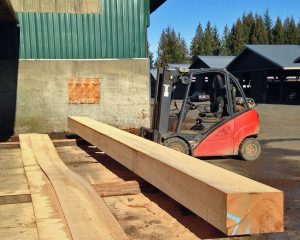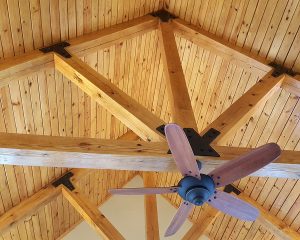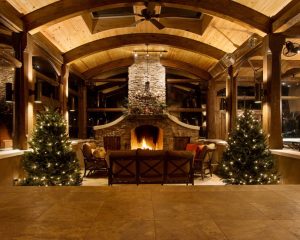 What would the world be like without wood? It’s an interesting question because this material is one of the most in-demand building supplies, not only in the United States but in many other countries around the globe. From historic homes made with wood to heavy timber posts in Atlanta, GA, used to make modern architectural marvels, the significance of timber cannot be understated. Here are some of the highlights of timber buildings that everyone should know and appreciate!
What would the world be like without wood? It’s an interesting question because this material is one of the most in-demand building supplies, not only in the United States but in many other countries around the globe. From historic homes made with wood to heavy timber posts in Atlanta, GA, used to make modern architectural marvels, the significance of timber cannot be understated. Here are some of the highlights of timber buildings that everyone should know and appreciate!
Multi-Use Material
Wood has long since been a popular material, not only for construction but also for things like fuel, furniture, paper, tools, and weapons. The demand for wood has risen steadily over thousands of years, as humankind finds more ways to make good use of this natural resource. Even today, methods for developing and managing forests and wooded areas rely heavily on techniques used by early civilizations. This goes to show that wood has been a significant resource for so long, and it’s difficult to imagine a world where heavy timber posts and timber frame brackets weren’t used each and every day. As a popular element in home renovation projects, new construction, and so much more, timber truly is one of the most important materials still used today. Both softwoods and hardwoods have been implemented in countless construction projects. Softwoods such as cedar, cypress, fir, juniper, pine, hemlock, redwood, and spruce account for four-fifths of the world’s lumber. Softwoods are typically easy to work with and more malleable, and their lower cost compared to hardwoods makes them a great choice for timber buildings.
Timber in the Early United States
 If there’s one thing history buffs know about timber, it’s that this material has been a source of contention and competition between countries for a long time. Some nations have a natural abundance of timber, meaning they have easier access to one of the key resources necessary for development and growth. Other parts of the world may not be as lucky, depending on the climate and the environment. Early settlers to the United States hit the jackpot when they found a generous timber supply in virgin forests that had never been torn down or disrupted. America’s lumber trade has been thriving for centuries, due not only to regular requests for timber brackets and beam brackets but also because much of the country is heavily forested. Americans have been able to cultivate timber for consumption and construction, leading to the popularity and prominence of timber buildings. After all, early settlers in the 1600s were looking at 820 million acres of forest that stretched as far as the eye could see. This led to the exportation of timber products during the days of the 13 colonies.
If there’s one thing history buffs know about timber, it’s that this material has been a source of contention and competition between countries for a long time. Some nations have a natural abundance of timber, meaning they have easier access to one of the key resources necessary for development and growth. Other parts of the world may not be as lucky, depending on the climate and the environment. Early settlers to the United States hit the jackpot when they found a generous timber supply in virgin forests that had never been torn down or disrupted. America’s lumber trade has been thriving for centuries, due not only to regular requests for timber brackets and beam brackets but also because much of the country is heavily forested. Americans have been able to cultivate timber for consumption and construction, leading to the popularity and prominence of timber buildings. After all, early settlers in the 1600s were looking at 820 million acres of forest that stretched as far as the eye could see. This led to the exportation of timber products during the days of the 13 colonies.
Beautiful Buildings
 During the seventeenth century, people began using timber to build homes and town buildings, some of which are still standing today. Timber was a reliable and durable building material, and as construction methods improved, wood was always available to showcase these advancements and bring them to life. Timber logs were shipped across the water to major cities, with Maine, New York, and Pennsylvania emerging as the leaders in lumber production and transportation. In the 1700s and 1800s, softwoods were used to make boardwalks, picket fences, paving blocks, pails, tubs, farm tools, windmills, and furniture. Eventually, railways and trucks took over as methods of transportation for timber products, which expanded the lumber markets from the eastern states to all across the country. As this happened, timber buildings continued to go up, serving as a testament to the power of the world’s natural wood supply.
During the seventeenth century, people began using timber to build homes and town buildings, some of which are still standing today. Timber was a reliable and durable building material, and as construction methods improved, wood was always available to showcase these advancements and bring them to life. Timber logs were shipped across the water to major cities, with Maine, New York, and Pennsylvania emerging as the leaders in lumber production and transportation. In the 1700s and 1800s, softwoods were used to make boardwalks, picket fences, paving blocks, pails, tubs, farm tools, windmills, and furniture. Eventually, railways and trucks took over as methods of transportation for timber products, which expanded the lumber markets from the eastern states to all across the country. As this happened, timber buildings continued to go up, serving as a testament to the power of the world’s natural wood supply.
Fast forward to the 21st century, and timber remains a reputable, highly-regarded resource for the building and construction industry. Many homes are still made out of timber today. If you’re ready to make fine hardwood interior and timber buildings a reality for your project, contact Wood & CO. for more information on our leading wood products.
